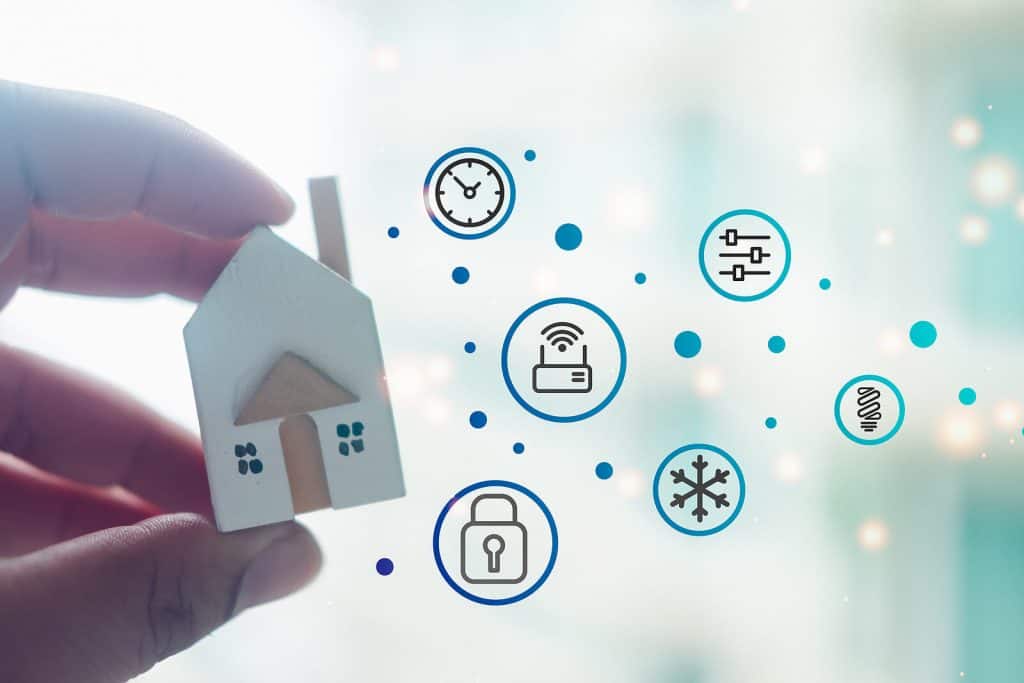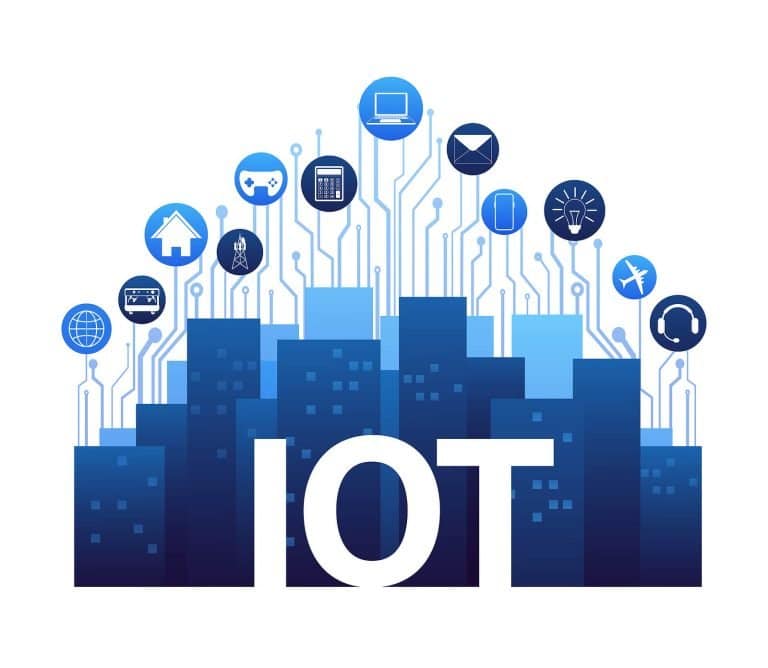Smart building infrastructure can give businesses a competitive edge, but implementing it can be challenging. Making the most of Internet of Things (IoT) connectivity means choosing the proper network protocol for your devices. While specific needs vary, LoRaWAN is often one of the best choices for smart building connectivity.
Table of Contents
ToggleLoRaWAN — short for Long Range Wide Area Network — is a low-power, low-frequency communication protocol. Despite alternatives like Wi-Fi and cellular being more recognizable to most users, LoRaWAN has emerged as a favorite for IoT networks for good reasons. The protocol has several key advantages for building connectivity.
1. Lowering Smart Building Costs
LoRaWAN’s cost efficiency is one of its strongest advantages for smart building infrastructure. On average, enterprises spend $400,000 a year on connectivity, so expanding IoT networks can be prohibitively expensive. By reducing initial and ongoing costs, LoRaWAN makes the IoT and its benefits more accessible.
This affordability stems from several places. First, a single LoRaWAN gateway can support a wide range of devices, so you can host larger, more complex networks with less hardware. Deploying these endpoints is also relatively straightforward, minimizing IT staffing costs in the installation process.
LoRaWAN is also affordable in its ongoing expenses. Because this technology uses unlicensed bands, you can avoid high networking costs. LoRaWAN also uses minimal energy, lowering the electrical price of your IoT networks to make building-wide systems more economically viable.
2. Supporting More Devices
Smart building networks are more useful when they offer insight or control over more areas. LoRaWAN supports this goal by letting you host more endpoints on a single network, thanks to the protocol’s high device capacity.
One LoRaWAN gateway can support 10,000 devices under the right circumstances. As a result, a smart building network with multiple gateways can host hundreds of thousands of endpoints, delivering millions of messages. Higher message frequencies and complexity will lower that number, but even still, this capacity leaves room for as many devices as a building could need.
That capacity is crucial for scalability. Your businesses may not need to host that many endpoints today, but as IoT technology advances and your IT budget grows, you will likely adopt more over time. LoRaWAN lets you add more devices to current networks without switching protocols or buying more gateways.
3. Strengthening Signals
Another unique advantage of LoRaWAN for building connectivity is its resistance to interference. Several other IoT protocols have similarly large capacities and can lower costs, but many need help to maintain signals across floors or through walls. By contrast, LoRaWAN has no issue with these physical barriers.
This interference resistance comes mainly from LoRaWAN’s sub-gigahertz frequency. Low-frequency waves lose less energy as they travel through solid objects than the higher frequencies in protocols like Wi-Fi and cellular. As a result, they are ideal for smart buildings, where signals must pass through multiple floors, walls and doors within an office.
LoRaWAN is also more immune to electromagnetic noise than other wireless networks. Bluetooth, Wi-Fi and similar technologies are highly sensitive to noise from other devices, which is not good for a building where employees may use hundreds — if not thousands — of electronics. Because these other signals do not impact LoRaWAN’s sub-gigahertz signals as heavily, it is a more reliable option.
4. Enabling Complex IoT Networks
Smart buildings must host a diverse range of endpoints. You may use connected CCTV systems because they reduce crime rates more effectively than other deterrents, smart HVAC to minimize energy costs and predictive maintenance sensors for on-prem servers. This complexity will yield more benefits but often requires similarly complex architecture.
LoRaWAN is more versatile because it can support devices in different modes on the same gateway. That flexibility means you will not have to separate your individual IoT systems, making it easier and cheaper to host a complex smart building network.
Fewer gateways and more straightforward network architecture lower the barrier to entry for smart building technology. As tech talent becomes increasingly difficult to acquire, that ease of implementation becomes all the more valuable.
5. Extending Battery Lives
LoRaWAN is also a highly energy-efficient technology. Wi-Fi may be the protocol most businesses are already familiar with, but it consumes a lot of energy, making it expensive at scale. By contrast, LoRaWAN signals require minimal energy, leading to lower power costs and longer battery life for your IoT devices.
Depending on the signals you send between devices, a coin cell battery can last years on LoRaWAN. That means less disruption to your smart building networks from fewer battery changes. AC-powered devices also benefit from this low energy consumption, lowering your building’s electricity withdrawals.
Sustainability is a key driver for many smart building initiatives, as connected HVAC systems and similar technologies can minimize energy consumption. Consequently, LoRaWAN’s low power needs naturally fit these investments.
LoRaWAN Best Practices
As these five benefits highlight, LoRaWAN is an ideal smart building connectivity protocol. Still, experiencing these advantages to their fullest requires understanding this technology’s limitations and how to use it best.
LoRaWAN’s long ranges and low power consumption come at the cost of lower bandwidth. You can work around this by using it for building-wide systems and those whose messages are relatively small, and using shorter-range, higher-bandwidth protocols for more complex signals. You can also shrink data payloads by encoding IoT messages as binary data instead of sending them in raw text or JSON formats.
LoRaWAN also has an adaptive data rate feature you can use to optimize energy consumption and bandwidth. Enabling this feature for more stable devices with minimal signal variation while deactivating it for endpoints with more variation will let you maintain efficient connectivity while minimizing power usage.
Similarly, you can adjust your smart building devices’ transmission intervals to balance communication, bandwidth and efficiency. Set low-urgency, more predictable IoT systems to transmit messages on a slower schedule while setting mission-critical ones to update more regularly. That way, your less urgent systems will not take as much bandwidth from your high-urgency ones.
LoRaWAN Makes Smart Buildings More Accessible
Smart building infrastructure can make your business more efficient and enable data-driven insights. If you want to make the most of these systems, consider using LoRaWAN to host these devices.
LoRaWAN can make IoT networks more affordable, scalable, reliable and energy efficient. By achieving those benefits, you can ensure a larger return on investment for your smart building systems.
FAQ
A: LoRaWAN (Long Range Wide Area Network) is a wireless protocol for low-power, long-range communication between devices. It enhances building connectivity by providing extended coverage, allowing sensors, devices, and systems within a building to communicate seamlessly across floors and even through walls, overcoming common connectivity challenges.
A: LoRaWAN operates on a low-power platform, enabling connected devices to transmit data with minimal energy consumption. This energy-efficient nature is particularly advantageous for building management systems, as it allows sensors to monitor temperature, lighting, occupancy, and other parameters while extending the battery life of these devices, reducing maintenance costs and environmental impact.
A: LoRaWAN offers secure communication through its robust encryption and authentication mechanisms. This level of security ensures that sensitive data, such as access control information, fire alarms, and surveillance feeds, remains protected against unauthorized access. By providing a reliable and secure channel for transmitting critical information, LoRaWAN enhances the overall safety and security of a building.
A: LoRaWAN’s long-range capability reduces the need for a high density of gateways or base stations within a building. This scalability advantage allows building managers to deploy more connected devices across the premises without incurring significant infrastructure costs. As a result, the cost-effective nature of LoRaWAN enables the rapid expansion of building automation and IoT applications.
A: Absolutely; LoRaWAN is versatile and can support many applications within buildings. From smart lighting and HVAC optimization to asset tracking and occupancy monitoring, LoRaWAN can accommodate diverse use cases. Its ability to provide reliable, long-range connectivity for various devices and sensors makes it an ideal solution for enhancing building management and automation across different industries.




